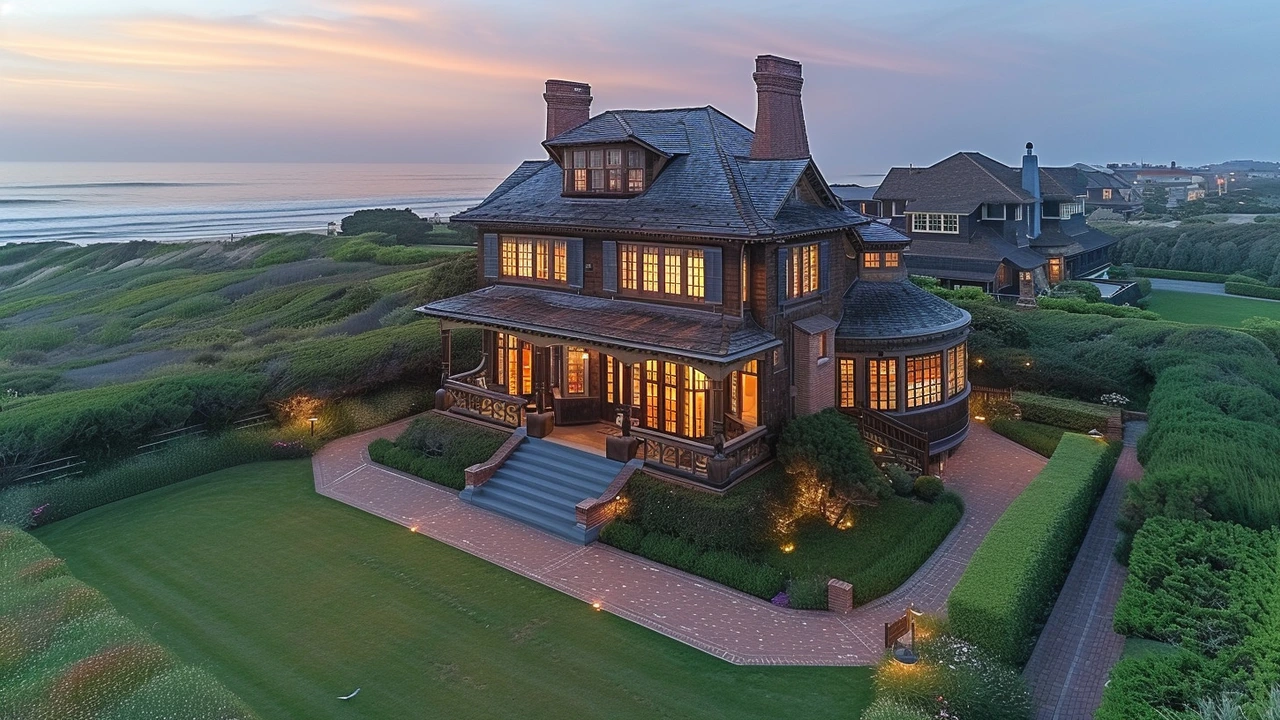Dutch Colonial Revival Architecture: Identify, Restore, and Modernize
Dutch Colonial Revival homes stop people on the street. Their gambrel roofs and graceful eaves are instantly recognizable, but there's more than a roof to this style. If you want to spot one, look for a broad, double-sloped gambrel roof, often with flared eaves that create extra headroom. Long dormers, symmetrical facades, and central chimneys are common. Original materials include clapboard or shingle siding and multi-pane double-hung windows.
For owners thinking about repairs or upgrades, keep the roof shape intact. Replacing roofing with historically compatible materials—wood shingles, cedar shakes, or modern composites that match the profile—keeps the look while improving performance. Preserve original dormer trims and window proportions. If windows must be replaced for energy reasons, choose slim-frame double-glazed units that mimic the original muntin patterns.
Modern living demands open kitchens and efficient systems. You can open interior walls without changing the exterior profile. Move plumbing and HVAC into basements or attics when possible to avoid visible exterior changes. Add insulation carefully: dense-pack blown insulation in walls and spray foam in attic spaces helps efficiency without altering interior moldings. For historic houses, document existing finishes before work and keep at least one original room intact to retain character.
Landscaping should respect the simple, balanced facade. Plant low hedges, foundation shrubs, and a central path to the front door. Avoid tall trees that hide the distinctive roofline. Porch updates can modernize entryways—replace rotted columns with new ones that match the scale and shape rather than changing column styles.
When restoring exterior paint, research original colors. Many early 20th-century Dutch Colonial Revivals used muted, earthy tones, natural wood stains, or white trim with darker siding. Test paint in small areas and let colors show at different times of day. For siding repairs, match lap and exposure; for shingles, replace whole boards rather than patching small sections to ensure weather performance and a consistent look.
Adaptive reuse ideas work well with this style. Turn attics under the gambrel into real living spaces by adding dormer windows where historically appropriate. Convert an old carriage house into a studio while keeping original doors and hardware. Historic tax credits or local preservation grants sometimes offset costs—check municipal programs and state historic preservation offices for eligibility.
If you want inspiration, read our detailed guide "Exploring Dutch Colonial Revival Architecture: Unique Features and Historic Charm" for photos and step-by-step tips. For broader context, see related articles on colonial architecture and preservation techniques on this site. Ready to work on a Dutch Colonial Revival house? Start with a measured survey of existing features, then plan the least invasive upgrades first.
Quick checklist before any project: photograph every facade, label original windows and trims, save one sample of siding, record paint layers, and get estimates from contractors experienced with historic homes. Ask about warranties for new roofing and window installs. Consider asking local preservation groups for contractor recommendations. Small steps at the start cut costs and protect the house’s character while making it ready for modern life and future use.

The Dutch Colonial Revival Architecture: A Blend of Old and New
As a female blogger who is passionate about architecture, I want to guide you through the fascinating era of Dutch Colonial Revival architecture. This unique architectural trend is a harmonious blend of vintage charm and modern flair, combining the best elements from the past and present. In this article, we will delve into the intricacies of this design style, and discover how it has stood the test of time. Join me as we journey through time, appreciating the beauty of architecture that tells stories of the past and embraces the novelty of the new.
Read more